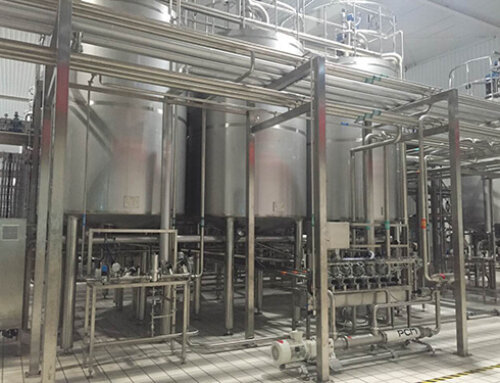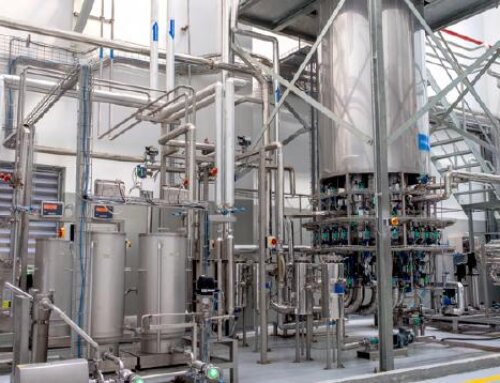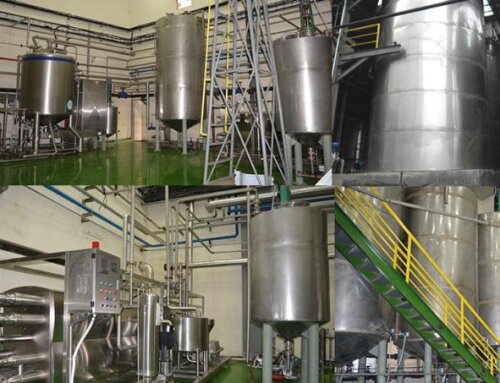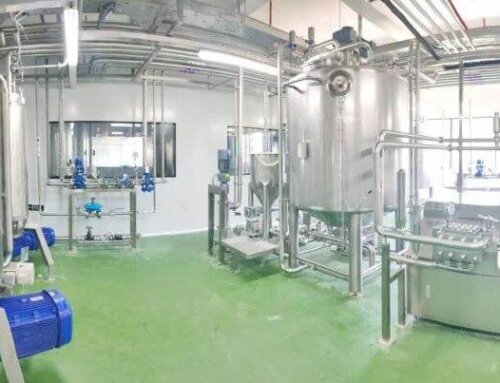Fruit Canning Processing Feature
The canned fruit processing technology is to seal the processed fruit in a container, after high-temperature sterilization, so that the fruit in the can is isolated from the external environment without being recontaminated by microorganisms so that it can be stored for a long time. Canned fruits can be stored for 1-2 years at room temperature.
The canned fruit can be chunks, slices, pieces or whole fruits according to clients’ requirements.
The capacity of the fruit canning processing line is from 500cans per hour to 5000 cans per hour, and the metal can or glass jars size is from 330g-5kg available for canning.
Canned fruit processing technological process flowchart includes fruit washing, sorting, grading, peeling, pitting, cutting, blanching, syrup preparation and filling, fruit products canning and sealing, canned fruits sterilization and cooling.
The most popular canned fruits are orange, pineapple, mango, tomato, peach, pear, cherry, apple and grape.

Fruit Canning Processing Flowchart Introduction
Raw materials selecting
The quality of raw materials used in canned fruit processing is an important factor in determining the quality of the finished product. The fruit raw materials used for canning require moderate maturity, freshness and fullness, tight flesh, rich flavor, moderate sugar-to-acid ratio, a small pit, high-temperature resistance, no mechanical damage and mildew defects.
Raw fruits sorting and grading
By manually selecting fruits that are damaged by diseases, insects, mildew, and mechanically, the sorting process can reduce losses during processing, reduce costs, and improve the quality of finished products. In order to mechanize and automate the processing of raw materials, it is necessary to grade the fruits according to their size, color, and maturity.

Fruit cleaning and washing machine
Fruit cleaning is to remove dust, silt, pesticide residues and a large number of microorganisms on the surface of the fruit. The cleaning of fruits is mostly mechanical cleaning. For the more polluted raw materials, the raw materials can be soaked and cleaned with dilute hydrochloric acid or acetic acid.

Fruits peeling, cutting and pitting
Many fruits have rough, tough skins or bad flavors under the skins. These skins and flavors will affect the flavor, color, mouthfeel and process operations of the canned fruit, so it needs to be peeled. At present, the commonly used fruit peeling methods include manual peeling, mechanical peeling, hot-blanching peeling and chemical peeling.
Some fruits, such as pineapple, mango, and other relatively large or irregular fruits, need to be cut after peeling, and cut into size and neat petals, pieces, etc. according to production needs.
There are also some raw materials such as peaches, plums, apricots, mangoes and other fruits with pits that need to be removed from inedible pits or cores.

Fruits blanching
Blanching is the process of putting processed fruits in hot water or steam after peeling, cutting and pitting process for heat treatment. By blanching, the fruit tissue can be softened, its volume reduced, enzymes can be inactivated, and browning can be avoided. According to the different raw materials of fruits and vegetables, use 85-100℃ hot water or steam to process the raw materials for 2-10min.

Syrup preparation and canning
In addition to fruit juice or jam, canned fruits also need to be filled with sugar liquid in order to enhance the flavor, remove air, and extend the shelf life of the product. In the process of filling the sugar solution, it is also necessary to add citric acid appropriately. The temperature of the filling sugar solution is about 90°C. The preparation of syrup should use white granulated sugar with a purity of more than 99%, which is diluted and dissolved with purified water to make the concentration of the sugar solution above 65%.

Fruit products canning
Fruits that have been peeled, cut, pitted and blanched should be canned immediately, otherwise the microorganisms will multiply. The solid content of cans after canning is 45%-65%. For production lines with a small and medium capacity, manual filling is mostly used, and the main processes include filling, weighing, compaction and liquid injection. The large-capacity fruit canning processing line can be completed full automatic by machinery.

Can vacuuming and sealing
During the filling process of canned fruit, there will be a certain gap between the top of the can and the lid. The air in the gap can be removed by filling liquid nitrogen or vacuuming, thereby prolonging the shelf life of the product and avoiding the color and fragrance of the product oxidation. The degassing of the cans can be achieved by being equipped with a vacuum sealing machine.
After the can is vacuumed, it needs to be sealed quickly while it is hot, so as to ensure that a good vacuum is formed in the can, and the can will not be polluted by the outside air and microorganisms to cause corruption and deterioration.
Canned fruit sterilization and cooling
Canned fruits are generally sterilized after filling and sealing. The sterilization methods are divided into normal pressure sterilization and pressure sterilization.
Normal-pressure sterilization temperature is 100℃, suitable for acidic foods with PH value below 4.2. It can be realized by water bath or spraying pasteurizing machine. Water is used as the heat transfer medium. When the center area temperature of the can reaches 100℃, the sterilization time is starting, and it needs to hold for about 30min.
Pressure sterilization usually uses a sterilization kettle to heat the can to about 120°C for 20-30 minutes. The heat transfer medium is mainly high-pressure sterilizing water.





